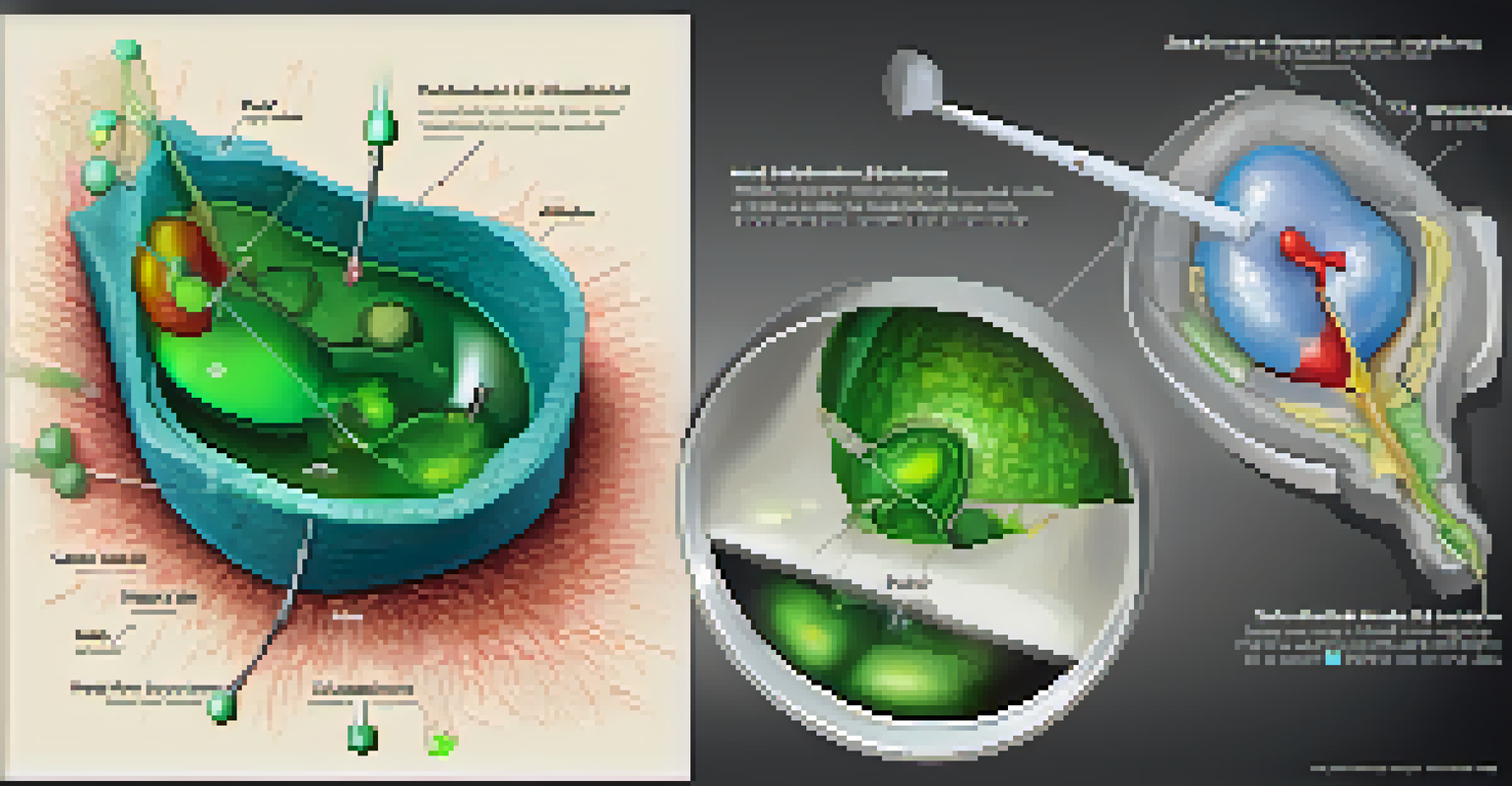Common Types of Surgical Procedures and Their Indications

What Are Surgical Procedures and Why Are They Necessary?
Surgical procedures are medical interventions that involve the use of instruments to treat or diagnose health issues. They can range from minor outpatient operations to complex surgeries requiring extended hospital stays. The necessity of these procedures often arises from injuries, diseases, or congenital conditions that cannot be effectively treated through medication alone.
Surgery is the most exciting thing in the world, and it's a privilege to be able to do it.
For instance, a person with appendicitis may require an appendectomy, a common surgical procedure to remove the inflamed appendix. Without this surgery, the condition could lead to serious complications. Ultimately, surgeries are critical in restoring health and enhancing quality of life for many patients.
Understanding the reasons behind specific surgical procedures can help patients feel more informed and empowered when discussing their options with healthcare providers.
Common Types of Surgical Procedures: An Overview
Surgical procedures can be categorized into a few main types, including diagnostic, therapeutic, and reconstructive surgeries. Each type serves a unique purpose, tailored to the needs of the patient. For example, diagnostic surgeries are performed to obtain samples or clarify a diagnosis, while therapeutic surgeries aim to treat or remove diseased tissue.

Reconstructive surgeries, on the other hand, are designed to restore the appearance or function of a body part after injury or illness. Understanding these categories can help demystify the surgical process and highlight the various ways surgery can improve health and well-being.
Surgery: A Path to Better Health
Surgical procedures are essential for treating conditions that medication alone cannot address, significantly improving patients' quality of life.
By recognizing the different types of surgeries, patients can engage in more meaningful conversations with their medical professionals about their specific conditions.
Appendectomy: A Lifesaving Procedure for Appendicitis
One of the most common surgical procedures is the appendectomy, which involves the removal of the appendix. This surgery is often performed when a patient is diagnosed with appendicitis, a painful condition caused by inflammation of the appendix. If left untreated, appendicitis can lead to serious complications, such as a ruptured appendix, which can be life-threatening.
The greatest risk in surgery is not the operation itself, but the decision to operate.
The procedure can be done either through traditional open surgery or laparoscopically, which is less invasive and typically results in shorter recovery times. Post-surgery, most patients experience significant relief from pain and can return to their normal activities relatively quickly.
The appendectomy serves as a prime example of how timely surgical intervention can prevent more severe health issues and improve patient outcomes.
Cholecystectomy: Addressing Gallbladder Issues
Cholecystectomy is another prevalent surgical procedure, primarily indicated for patients with gallbladder disease, such as gallstones. The gallbladder stores bile, which aids in digestion, but when gallstones form, they can cause pain, nausea, and other digestive problems. This surgery involves the removal of the gallbladder, either through laparoscopic or open techniques.
Patients often find relief from symptoms after the surgery, as the removal of the gallbladder eliminates the source of their discomfort. Furthermore, many individuals can adjust to living without a gallbladder, as the body adapts by releasing bile directly into the intestines.
Types of Surgery Explained
Understanding the various types of surgical procedures—diagnostic, therapeutic, and reconstructive—can empower patients in their healthcare decisions.
Understanding the reasons for a cholecystectomy can help patients feel more at ease with their treatment plan and recovery.
Hernia Repair: A Common Surgical Solution
Hernia repair is a common surgical procedure performed to correct hernias, which occur when an internal organ protrudes through a weak spot in the abdominal wall. This condition can cause pain and discomfort, especially during physical activities. Surgical intervention is often recommended when the hernia becomes incarcerated or strangulated, as these situations can lead to serious complications.
The repair can be done using open surgery or minimally invasive techniques, such as laparoscopic surgery, which generally results in quicker recovery times. After surgery, most patients experience significant relief from pain and can gradually return to their daily activities.
Hernia repair highlights how surgical procedures can effectively address structural issues within the body, improving overall health and quality of life.
Knee Arthroscopy: A Minimally Invasive Approach
Knee arthroscopy is a minimally invasive surgical procedure used to diagnose and treat various knee issues, such as tears in the meniscus or ligament injuries. During the procedure, small incisions are made, and a tiny camera is inserted into the knee joint to provide a clear view of the internal structures. This allows surgeons to perform necessary repairs without needing extensive open surgery.
Patients often benefit from shorter recovery times and less postoperative pain compared to traditional methods. Many individuals can return to normal activities within weeks of the procedure, with improved mobility and reduced pain.
Informed Decisions Are Key
Being informed about surgical options helps alleviate anxiety and fosters trust between patients and healthcare providers.
Knee arthroscopy exemplifies how advancements in surgical techniques are making procedures safer and more effective for patients.
Bariatric Surgery: A Tool for Weight Loss Management
Bariatric surgery encompasses several surgical procedures aimed at helping individuals with severe obesity achieve significant weight loss. Conditions such as obesity can lead to numerous health problems, including diabetes, heart disease, and joint issues. Bariatric surgery can provide a viable option for those who have struggled with traditional weight loss methods.
Common types of bariatric surgery include gastric bypass and sleeve gastrectomy, which alter the digestive system to limit food intake and nutrient absorption. Post-surgery, patients often experience substantial weight loss, leading to marked improvements in their overall health and well-being.

Bariatric surgery serves as a powerful reminder of how surgical interventions can transform lives and promote healthier lifestyles.
Conclusion: The Importance of Informed Surgical Decisions
Understanding the common types of surgical procedures and their indications can empower patients to make informed decisions about their health. Each procedure serves a unique purpose and can lead to significant improvements in quality of life when performed appropriately. It's essential for individuals to discuss their options thoroughly with healthcare providers to ensure they are choosing the best course of action for their specific conditions.
Moreover, being informed about these procedures can alleviate anxiety and foster trust between patients and their medical teams. Ultimately, knowledge is a vital tool in navigating the complexities of surgical interventions.
By embracing education around surgical procedures, patients can take proactive steps toward better health and well-being.